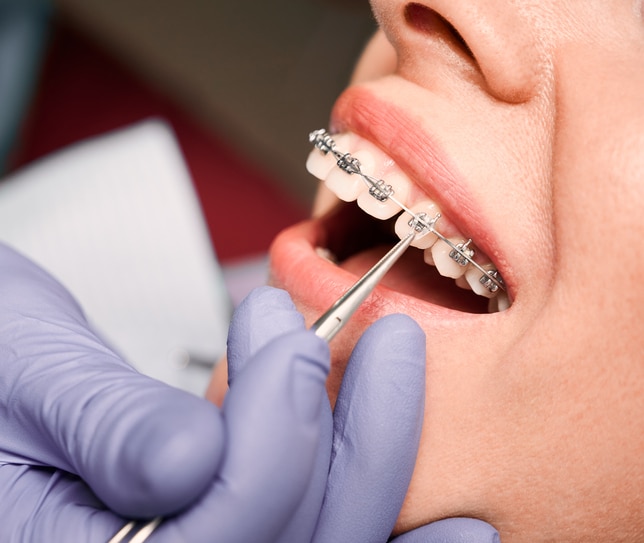Leading Tips for Picking the very best Cumming Orthodontist for Braces and Aligners
Comprehensive Overview to Orthodontics Treatments for Fixing Dental Imbalances
Recognizing the details of each treatment, including their devices, advantages, and prospective disadvantages, is important in making informed decisions concerning one's orthodontic therapy. As we browse with the extensive guide to orthodontic treatments for fixing oral misalignments, the elaborate information of each approach will unfold, dropping light on the path toward a functional and unified dental alignment.
Orthodontic Procedures Overview

Regular modifications and monitoring are essential components of orthodontic treatment to make certain progression is on track and to make any essential modifications along the means. By undergoing orthodontic treatments, people can not just achieve a straighter grin yet also improve their overall oral health and wellness and feature.
Conventional Braces: Exactly How They Work
When considering orthodontic therapies for oral misalignments, conventional braces stand out as a time-tested technique for remedying teeth placing. Standard braces are composed of brackets, cords, and bands that function with each other to apply continuous pressure on the teeth, gradually moving them into the preferred placement.
One key element of how traditional dental braces work is the procedure of bone makeover. As stress is used to the teeth via the dental braces, the bone bordering the teeth is improved to sustain the new tooth settings. This remodeling is crucial for the long-lasting security of the remedied alignment. People will certainly require regular modifications at the orthodontist's office to guarantee the braces continue to use the right pressure for effective teeth motion.
Unnoticeable Aligners: Disadvantages and pros
Invisible aligners provide a very discreet and convenient alternative to standard dental braces for correcting oral misalignments. These clear, tailor-made trays are basically unseen when worn, making them an appealing choice for people seeking a much more cosmetically pleasing orthodontic therapy. One of the primary benefits of invisible aligners is their removability, enabling simpler upkeep of oral health contrasted to standard braces. People can remove the aligners prior to eating or brushing their teeth, lowering the threat of food getting stuck in the appliance and streamlining the cleansing process.

Surgical Orthodontic Options
Surgical treatments in orthodontics existing viable options for dealing with complicated oral misalignments that may not be successfully fixed with conventional orthodontic therapies. While invisible aligners and traditional dental braces can deal with several orthodontic concerns, particular situations need medical intervention to attain optimal outcomes. Surgical orthodontic alternatives are commonly advised for severe malocclusions, considerable jaw discrepancies, and cases where the underlying bone structure requires adjustment to achieve proper alignment.
One typical medical orthodontic treatment is orthognathic surgery, which includes repositioning the jaws to remedy why not find out more useful issues such as trouble talking or eating. This surgery is often executed in collaboration with an orthodontist who helps line up the teeth prior to and after the treatment. Surgical orthodontics may also include treatments to expose affected teeth, eliminate excess gum tissue, or reshape the jawbone to create an extra unified facial profile.
Before considering medical orthodontic choices, clients go through a detailed analysis to establish the necessity and potential benefits of such treatments. braces. While surgical treatment might appear overwhelming, it can significantly improve both the feature and appearances of the smile in instances where conventional orthodontic therapies fail
Retainers and Post-Treatment Care

Post-treatment care includes complying with the orthodontist's directions carefully. This might include correct oral hygiene practices, attending follow-up visits, and using the retainers as prescribed. Failing to abide by post-treatment treatment instructions can lead to regression, where the teeth progressively move back in the direction of their initial placements. Consistent retainer wear, excellent dental hygiene, and dental hygiene clinic normal oral check-ups are important for maintaining the outcomes achieved with orthodontic surgery and guaranteeing the lasting security of the fixed dental positioning.
Conclusion
In verdict, orthodontic procedures use numerous alternatives for fixing oral imbalances. Surgical orthodontic choices are readily available for much more serious misalignments. Generally, orthodontic procedures can effectively improve oral health and visual visit the site look.
As we browse through the comprehensive guide to orthodontic procedures for remedying oral misalignments, the complex details of each approach will unfold, losing light on the course towards a harmonious and useful dental placement. - braces
One of the most typical orthodontic therapies is the use of braces, which consist of steel braces and wires that apply gentle stress to gradually change teeth right into the wanted placement.When taking into consideration orthodontic treatments for dental misalignments, typical braces stand out as a time-tested method for fixing teeth positioning. In addition, unnoticeable aligners may not be appropriate for intricate orthodontic problems that need more significant teeth activity, as they are generally suggested for moderate to modest cases. Retainers are customized orthodontic devices designed to hold teeth in their remedied placements after the completion of orthodontic treatment.